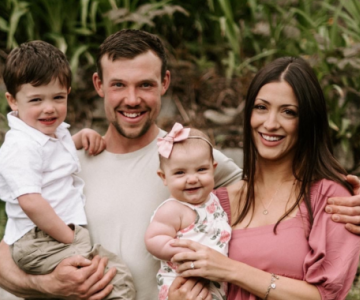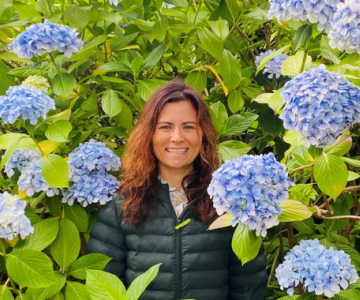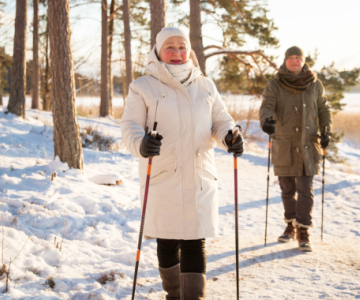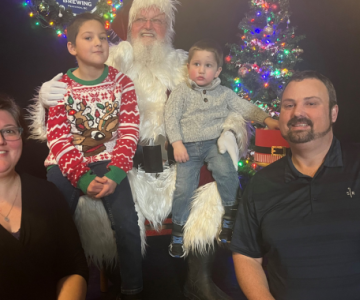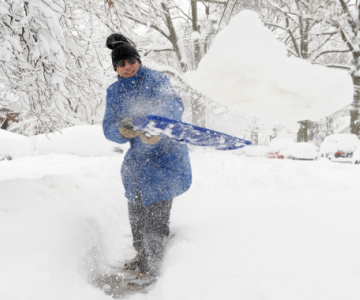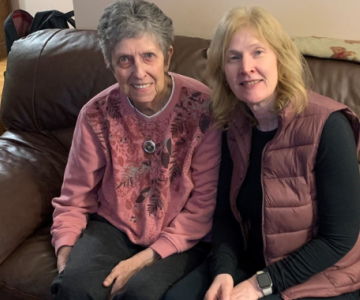Breadcrumb
Explore Stories
7 Minute Read
Community & Culture
Welcome to the Meet Your Recruiter series, where we bring you closer to the dedicated professionals behind Interior Health's recruitment team. In this series, you'll have the opportunity to get to know the recruiters who play a vital role in attracting and selecting talented individuals to join our dynamic health-care team.
Discover their passions, expertise and invaluable insights as they share their experiences and shed light on the exciting opportunities that await you within Interior Health. As one of the largest health-care authorities in B.C., we are committed to providing exceptional care to the communities we serve. These are the people who help us fulfill this commitment.
4 Minute Read
Health & Wellness
Caring for someone with dementia can spark a range of emotions – and these will change over time. Everyone’s dementia journey is different: some people will live long and fulfilling lives at home. Others may decline quickly and will need specialized care in the community.
In our previous story, we talked about how dementia is diagnosed, and what happens next. Here, we explore the various care options for those with dementia and their caregivers.
3 Minute Read
Community & Culture
Name: Jenna Hunter (she/her/hers)Job Title: Interim Regional Knowledge Coordinator/Internationally Educated Nurses – Clinical EducationYears of Service: 18Worksite: Vernon Jubilee HospitalCommunity: Vernon Ancestral Territory: Syilx NationFavourite Quote / Advice to live by: "Tell me, what is it you plan to do with your one wild and precious life?" - Mary Oliver
Born in the Vernon Jubilee Hospital (VJH), Jenna Hunter’s career and life have come full circle. After becoming a registered nurse (RN), Jenna would spend her time caring for patients in the same hospital that she was born, before becoming a clinical educator.
Jenna is grateful to all the people along the way who believed in her and took the time to encourage her.
When she’s not at work, you can find her spending time with her family, travelling and enjoying the fresh air with a book in hand. She also adds that she’s always up for anything as long as it’s an adventure.
4 Minute Read
Health & Wellness
The winter season can be a difficult time for everyone. While there are many festive days, and activities to enjoy and look forward to, the winter season can also bring stress from holiday planning, family gatherings, financial worries, the gloomy weather and shorter days. These added stressors may impact your mental health, physical health, and overall well-being.
To combat this, Interior Health's Mental Health and Substance Use (MHSU) team has created 10 healthy habits to consider during the winter season.
3 Minute Read
Community & Culture
Name: Marie Vajda (she/her/hers)Job Title: Administrative Services ManagerYears of Service: 6Worksite: Penticton Health Centre Community: South Okanagan Ancestral Territory: SyilxFavourite Quote / Advice to live by: “Don't stress. Take it one email, one request and one day at a time.” And “sorry—my crystal ball is broken!”
After working in retail supervision and management for 10 years, Marie found herself at a junction when the company she was working for closed.
After going back to school, she found a job as a medical office assistant in a busy North Vancouver office. When her husband’s work took them to Prince George, she found a job as a medical software tester and trainer.
Six years later, in 2017, the Vadja family moved to Penticton, where Marie found a position in administration at the Penticton Health Centre. What started out as a casual role became a permanent position. She was promoted to supervisor, then manager, administrative services.
3 Minute Read
Health & Wellness
As the snow falls, and we prepare to enjoy our favorite winter activities, it is important to remain prepared and stay protected from risky weather situations. There's always potential for freezing cold temperatures in the winter. Here's what you can do to ensure you and your family remain safe and healthy.
2 Minute Read
Health & Wellness
After a mild winter throughout the B.C. Interior, the snow we’ve been anticipating has finally arrived.
It’s an exciting time for ski and snowboard enthusiasts. It’s also a time when we pull out the shovels to clear our driveways, although hopefully not too often.
Shovelling snow can be an inconvenience, but may also cause injury, mainly to your back and shoulders.
However, injuries can be prevented with the right approach.
5 Minute Read
Health & Wellness
If you find yourself forgetting names, misplacing keys or not remembering your granddaughter's birthday, it's natural to feel worried it could be a sign of dementia. As we explored in our previous story, memory loss and difficulties often come with age, but don't always mean you're developing dementia.
In this story, we explore how dementia is diagnosed, and what happens after a diagnosis, both for the individual with dementia and their family.
2 Minute Read
Health & Wellness
When you first walk into the Medicine Shoppe Pharmacy in Vernon, it’s like any neighbourhood pharmacy: it has your over-the-counter drugs for cold and flu season, your daily essential vitamins and prescription drugs.
But behind the counter is something unique: a drug checking service for anyone to use. It's the first service of its kind offered at a pharmacy in the B.C. Interior.
“Drug checking services allow us, in the face of the toxic drug crisis, to monitor what is happening with the illicit drug supply. Otherwise, we don’t know until it’s too late,” noted Interior Health’s manager of harm reduction Jessica Bridgeman.
-
Load More
Showing 144 of 677
STAY CONNECTED
Receive news and alert posts, and Stories@IH blog posts, right to your inbox!

